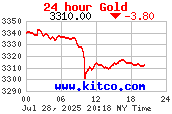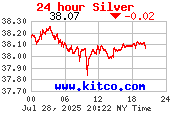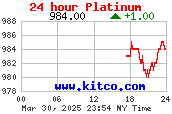畢老林
巴克萊交易局中局
金融海嘯一周年,媒體紛紛「翻舊賬」,道德風險、死不足惜、reform, what reform?……或不留情面,或語帶雙關,矛頭直指貪得無厭的賓架。
老畢一介凡夫,無資格站在道德高地說三道四,但常言道得好,你有張良計,我有過牆梯,趁 G20 本周四、五在美國匹茲堡召開高峰會議,金融監管議題炙手可熱,在下試從近日一宗實例,探索探索道高一尺,魔高一丈的問題。
銀行股勢強,中資內銀、獅子錢莊、美資大行,無不升完可以再升。
個人認為,英資大行巴克萊計劃將一批有毒資產「左袋交右袋」一事,不論從金融監管、道德風險以至信貸解凍的角度分析,都是銀行業近期最值得關注的事態發展。拆拆這個局,比痛斥銀行家厚顏無恥、為罵而罵更有建設性。
巴克萊上星期宣布,計劃以123億美元向一家新成立的基金公司─—Protium—─出售一批不良證券化資產。集團在公告中說,Protium 以開曼群島為基地,法律上屬「獨立」機構。然而,從 Protium 由兩名前巴克萊高層打骰、所購入的百餘億美元不良信貸組合,資金全數來自巴克萊一筆十年期貸款可見,所謂「獨立」,有名而無實。
監管機構鞭長莫及
企業之間的關連交易,只須申報清楚、闡明利益,符合監管要求便可。這樣看,巴克萊向 Protium 出售不良資產、交易百分百由巴克萊負責融資,本身並無不妥。可是,若非旨在規避監管(巴克萊須為巨額借貸作充足壞賬準備,交易涉及的不良資產將以貸款形式留在銀行資產負債表),亦不是為了釋放資金強化借貸業務(不良資產只是換了個形式存在,Protium 交易不會產生釋放資金,讓巴克萊得以多做其他貸款生意之效),非驢非馬,這宗交易所為何事?
正如前述,Protium 在法律上是一家「獨立」機構,借巴克萊的錢買入巴克萊的不良資產,銀行雖有必要為收購涉及的巨額貸款做足撥備,但根據會計規例,「有毒證券」由 Protium 接收後,巴克萊毋須再為相關資產按市值入賬(mark-to-market),對降低這家英資大行的盈利起伏大有幫助。此招在效果上形同左袋交右袋,既有轉移毒資產的實效,與監管條例又無牴觸,當局即使有心一管,亦只能嘆句鞭長莫及。
值得一提的是,Protium 弗人跟巴克萊雖有千絲萬縷的關係,但由於其員工法律上並非受僱於巴克萊,這家基金公司的行政人員薪酬多高、花紅多厚,一概不屬銀行管轄範圍;也就是說,毋須向監管機構交代。
今年初為信貸危機著書立說的《金融時報》記者 Gillian Tett,對巴克萊的做法打了一個有趣的比喻:在 Protium 交易的巧妙掩飾下,有毒資產給一股腦兒掃進「地窖」(cellar),巴克萊這間金融巨宅的「廳堂」,看上去乾乾淨淨、一塵不染。可是,到「地窖」裏一瞧,藏於其中的污垢,只怕出動十架八架垃圾車也載不下。
在各國政府大聲疾呼加強監管下,巴克萊先例既開,其他金融機構照辦煮碗的誘因肯定大增,從有毒資產到高層薪津,銀行借「獨立」機構陽奉陰違、暗渡陳倉的例子,今後勢必陸續有來。Moral hazard ? You bet !
牽一髮動全身
聯儲局公開市場委員會(FOMC)閉關兩天後宣布,聯邦基金目標利率維持在0-0.25厘水平,同時對美國經濟前景作出自去年9月雷曼倒閉以來最樂觀的評論。雖則如此,FOMC 認為美國經濟復蘇力度不足以讓聯儲局在現階段撤回龐大的支持金融體系措施;換句話說,「退市」言之尚早。
聯儲局發表聲明後,美股周三升幅一度擴大,但尾段沽盤湧現,看來投資者對央行縮小購買按揭證券規模,並把這項措施延長至明年3月,起初反應冷淡,但經過消化後,發現情況不妙,還是「走為上著」。
《信壇》健筆 Chan David 在議息結果公布後發表意見,指減購按揭證券看似小事,實則牽一髮動全身。美國許多存貸公司、房利美、房貸美,以及為「兩房」證券打包的公司,全賴政府間接泵錢才能苟延殘喘,一旦失去政府支持,斷供潮不難重現,資產市場再洗牌不奇。
停購按證等一等
值得補充的是,美國新發行的按揭抵押證券,目前八成以上由聯儲局「吞下」,央行一旦減購甚至停購,沒有人知道私人市場對這些證券有多少承接力。說到底,美國按揭利率之所以能維持在低水平,絕非由於信用好還款能力強的置業者人數大增,亦非像香港銀行般為爭生意大打利率戰,而是全賴聯儲局「包底」,承諾購入1.25萬億美元按揭抵押證券;另一邊則有財政部向「兩房」注入近千億美元,同時為其按揭產品提供擔保;若非如此,美國樓市境況更堪虞。
其實,依賴政府間接泵水始能存活的公司,又豈止大兄所提的那些,隨便列個清單計計數,注資銀行用了1734億(美元.下同)、拯救 AIG 用了698億、汽車公司778億,此外還有協助置業人士紓困的500億,這還未計諸如挽救瀕臨破產航空公司等有待落實的計劃。可以說,對經濟樂觀者看到的「綠芽」,完全建基於政府和央行大規模干預,當局一旦抽身,經濟復蘇可以支持幾耐?
經濟未好到聯儲局有信心停購手上按揭證券遑論向私人投資者轉售,加息更加未是時候,聯儲局可以怎樣退市?
老畢早前講過,銀行信聯儲局多過信同業、信同業又多過信消費者和企業。聯儲局去年起向銀行存放於央行的儲備和閒置資金支付利息,基於銀行在貨幣市場拆放資金,息率不會低於聯儲局向銀行儲備支付的水平(把錢「停泊」在聯儲局沒有風險),後者實際上成為市場利率的「底線」,聯儲局將之調高,短期利率極可能作出反應,不必直接調高聯邦基金利率,也可達到收緊信貸之效。
不過,這樣做有兩個問題:一、銀行可能把更多資金「停泊」在聯儲局,借貸活動更難活躍起來,對經濟不利;二、公眾對聯儲局以納稅人的錢讓銀行享受高息大感不滿,在政治上未必可行。
退市,真的不容易。
政府不托樓市難振
聯儲局會議結果公布後,美股、港股連續兩天走低。看樣子,美國「退市」雖摸石頭過河,但投資者對全球央行陸續撤回對金融體系的支持,已有心理準備,股票估值過高的疑慮開始困擾市場。
昨天提到聯儲局這個按揭證券大買家一旦停購,美國按息和樓市可能出現震盪。當晚美國全國房地產商協會(NAR)公布,8月份現貨住宅銷售下跌2.7%(之前四個月皆升)。數字一出,歐美股市同時腳軟。
判斷美國樓市形勢,不能單看一兩個月的銷售數字,但聯儲局以量化寬鬆政策人為地壓低長債孳息和按揭利率,政府則以稅務優惠等措施間接補貼首次置業人士。不難想像,來自這兩方面的支持一旦同時消失,對花旗樓市的衝擊不容低估。
購買按證是量寬政策的一部分,相關消息成了市場焦點。較少人注意的是,首次置業者每戶8000美元的政府「補貼」,有效期將在今年11月30日屆滿。NAR 的數字顯示,「上車一族」在7、8兩月為美國住宅銷售貢獻了三成,這項措施終止後,房屋買賣和樓價會點?
上星期老畢分別以樓價對租金比率和息口等角度,論及港美兩地樓市。今天轉個玩法,從樓價對黃金比率分析港美房地產。
大家可能會話,喂,老畢,唔好又講金得唔得?當然可以。不用金價做指標,大可代之以幾多磅麵包買一間屋、幾多斤豬肉買一個單位。重點是,只看物業的名義(nominal)價格,不能反映購買力變化和房屋相對其他資產的表現,因為過去十年通脹蠶食了美元25%購買力;與美金掛鉤的港元,相對其他貨幣,購買力亦隨美元下降。以黃金這種無地域無國界貨幣衡量樓價,對物業在不同時期的「平」與「貴」,不失為一個可靠指標。這裏先看美國,再看香港。
眾所周知,科網泡沫爆破後,格老以房地產泡沫之。在2005年美國樓市高峰期,要買入一間中位價房屋(以S&P╱ Case-Shiller美國二十個城市樓價指數中位值為準),得用上四百九十盎斯黃金。樓市泡沫爆破後,一則樓價大幅下滑,二則金價牛市已成,樓價對黃金比率持續下降。今時今日,一間美國中位價房屋,一百六十盎斯黃金便有交易,比率重返1988年水平。
名義價格又如何?美國樓價已回落至2003年水平。然而,以黃金作估值基準,2003年一間屋約相當於四百二十盎斯黃金,今天一百六十盎斯便能買到。由此可見,2009年美國樓價雖與六年前相若,但兩種資產的榮辱盛衰,在樓價對黃金比率中表露無遺。
黃金真正贏家
睇完美國,輪到香港。為方便比較,老畢化繁為簡,將美聯本港樓價指樓在2000年1月rebase,基數100,以此比對盎斯金價後得出樓價對黃金比率,再用同一模式顯示美國樓價對黃金比率,併於圖一。以金價衡量,大家可以發現,自世紀轉折至沙士期間,香港物業估值一直下滑;美國則由2000至05年平穩向上,2005年後每下愈況。
香港在世紀初至2003年間,飽受通縮、經濟低迷和疫症打擊,同一時間美國樓市則泡沫漸成。2005年美國樓價見頂,不論以名義價格還是黃金比率衡量,之後樓市表現俱慘不忍睹。
本港樓價今年升勢明顯,但以樓價對黃金比率為準,去年金融海嘯後港美走勢十分相似,香港優勢並不明顯。這樣看,黃金才是真正的贏家。





3 則留言:
正如前述,Protium 在法律上是一家「獨立」機構,
Comments:-
IAS27 - Legal entity should be consolidated if the parent company has controlling interests in another entity. Control - ability to control financial and operating policies - should be assessed based on the number of criteria such as (a) voting right percentage in shareholdings; (b) voting right percentage in board; (c) any contract entered to let one entity to dominate another entity's financial and operating policies even the one only holding minority interests and power.
Therefore, Protium, as a SPV, needs not to be consolidated under IFRS.
借巴克萊的錢買入巴克萊的不良資產,銀行雖有必要為收購涉及的巨額貸款做足撥備. 但根據會計規例,「有毒證券」由 Protium 接收後,巴克萊毋須再為相關資產按市值入賬(mark-to-market),對降低這家英資大行的盈利起伏大有幫助。
Comments:-
IAS39
The toxic assets (probably ABS and MBS which include CDO) may be classified as "Financial assets at FVTPL" previously by Barclays and its fair value changes are reflected in Barclays' profits and loss immediately and makes its' financial performance highly volatile. If these toxic assets are sold to Protium, which is financially supported by the loans borrowed from Barclays, Barclays is able to eliminate these "Financial assets at FVTPL" in its balance sheet and let it become "Available for sale (AFS)". The fair value changes of AFS is reflected in equity reserve instead of profits and loss, therefore the net profits/(loss) of Barclays can be smoothed.
此招在效果上形同左袋交右袋,既有轉移毒資產的實效,與監管條例又無牴觸,當局即使有心一管,亦只能嘆句鞭長莫及。
Comments:-
Tax heavens countries such as BVI and Cayman Islands have this legal practices for long time to allow various form of entities (e.g. companies, partnerships, unit trusts, mutual funds) to incoporate and help them to hide their financial details. Even you perform company search, the reports given by the local authority only disclose very few details of the companies. Therefore, many company such as Alibaba group has group structure that the listed company is hold by the unlisted ultimate parent which incorporated in these tax heavens countries. Many assets and liabilities and RPTs are dealed via this ultimate parent company. It makes very difficult to trace the real counterpary of these transactions. The purpose of many groups is to hide ultimate counterparty, escape local regulations (tax evasion - regulatory arbitrage), and money laundering.
Further comments for SPV
SPV/SPE is a legal entity a company can be utilised for specific purpose such as follows:
a) Property holding vehicles, which has only major assets - property in its financial positions. It eases for future transactions to lower tax charged (e.g. stamp duty)/tax efficient increasing purpose;
b) Structured investment vehicles (SIV), which is designed to utilise highly skilled financial techniques to gain arbitrage interests income from low interests bearing borrowing (normally short term instruments) and high interests bearing investments (normally long term instruments);
c) Products repackaging vehicles, which is used to synthesize various new structured products (such as CDO, CLN, ABS, and asset swaps) from existing financial products or/and modify risk/return payoff profiles of the products. Example like Lehman Brothers related Minibonds and Constellations, they are a sort of CLN. The issuer is the SPV and the investors are the retail Hong Kong people.
Despite various purpose, one common theme is to segregate the assets and liabilities clearly between original parent company and SPV in order to enhance clearer set of accounts, enhance creditworthiness of the assets hold by the SPV, or to enhance the capital adequacy ratio (CAR) in the bank cases to fulfil the Basel II requirements if the SPV is able to escape from consolidation into the bank accounts according to applicable laws and financial reporting standards.
For some cases, they are used for illegal purposes such as Enron/Arthur Anderson cases, Enron set up around 3,000 SPV to hide its liabilities and create continual super growing revenue in the Enron company.
To successful implement the SPV program for not being consolidated, the company needs to look into the IFRS (especially IAS 27 and SIC-12), and US GAAP (especially FASB Interpretation No 46(R) regarding the definitions of Variable Interest Entity (VIE))
The SPV needs to be incorporated in tax heavens countries like British Virgins Islands and Cayman Islands and held by Charitable Trusts incorporated there. A company can donate money to the trust as the start up capital. The trustee and the SPV management must not be employee of that company. The trustee should receive money from the SPV and donate it for charity activities regularly to fulfil the charity purpose in its entity charter (e.g. articles of associates or memorandum of associates). The company can sell its assets to the SPV, which issue funding program (e.g. bonds) to attract new investors to buy the SPV’s bonds. The funding SPV obtained can be used to purchase the assets sold by the company. The SPV management should appoint the company as servicers to provide accounting, administration, and interests collection activities. The company therefore can eliminate its original assets from its balance sheet and still able to continuously receive revenue as servicers. The company can then free up the capital for further investments and operations.
I hope this illustration can give you all guys (or girls if any) better understanding of the purpose and operations of SPV/SPE.
多謝P-friend的「技術性」資料補充!
關鍵是,在金融海潚的威脅下,加上官商間千絲萬縷的關係(例如Goldman Sachs與華府),各國政府更加不會去除此等漏洞!
如果將來出事,又要納稅人包底!
你對政府的信心會增加還是減少?
所以,黃金......!
發佈留言